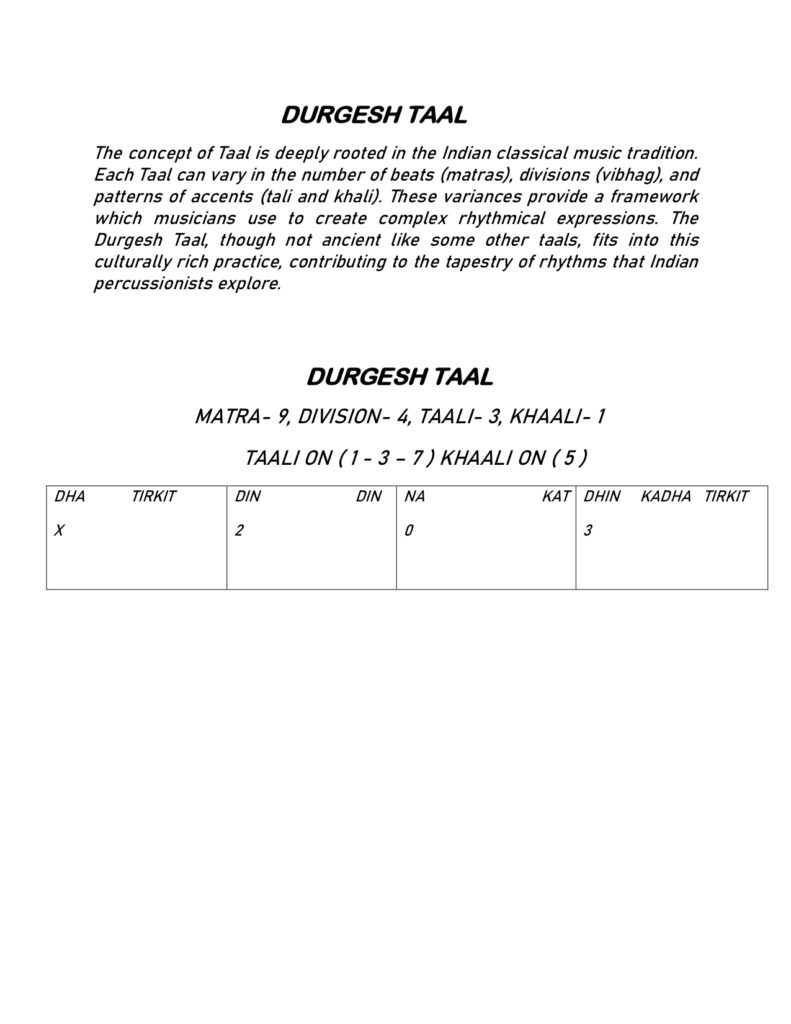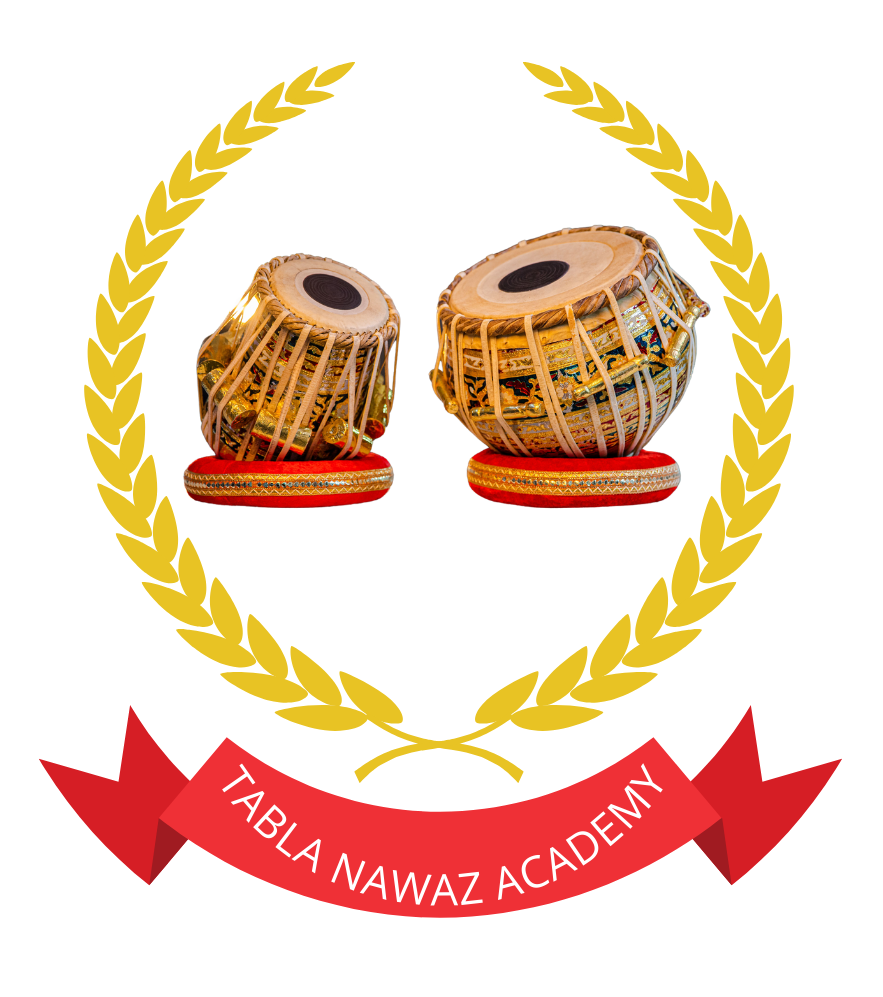Durgesh Taal Theka, DURGESH TAAL MATRA- 9, DIVISION- 4, TAALI- 3, KHAALI- 1 TAALI ON ( 1 – 3 – 7 ) KHAALI ON ( 5 ) Durgesh Taal is a less commonly talked about rhythmic pattern within the expansive repertoire of tabla compositions. Unlike more popular taals such as Teental or Dadra, Durgesh Taal offers a distinct rhythmic structure that can enrich both traditional and contemporary musical compositions.
Introducing the-

https://www.youtube.com/@BhagawanSingh
https://www.facebook.com/sbsinghtablaguru
DURGESH TAAL MATRA- 9, DIVISION- 4, TAALI- 3, KHAALI- 1 TAALI ON ( 1 – 3 – 7 ) KHAALI ON ( 5 )
Tabla Assistant
Durgesh Taal is a less commonly talked about rhythmic pattern within the expansive repertoire of tabla compositions. Unlike more popular taals such as Teental or Dadra, Durgesh Taal offers a distinct rhythmic structure that can enrich both traditional and contemporary musical compositions.
Historical Context
The concept of Taal is deeply rooted in the Indian classical music tradition. Each Taal can vary in the number of beats (matras), divisions (vibhag), and patterns of accents (tali and khali). These variances provide a framework which musicians use to create complex rhythmical expressions. The Durgesh Taal, though not ancient like some other taals, fits into this culturally rich practice, contributing to the tapestry of rhythms that Indian percussionists explore.
Overview of Durgesh Taal
- Matra (Beats): 9
- Division (Vibhag): 4
- Taali (Clap): 3 Times; on beats 1, 3, and 7
- Khaali (Wave): On beat 5
This rhythmic arrangement allows for a contrasting pattern between the open sound created by a ‘khaali’ and the solid beats marked by a ‘taali.’
Possible Composition
An example of how this taal might be structured in terms of bols (syllables) could be:
- Dha
- Dhin
- (taali)
- Na
- – (khaali)
- Tin
- (taali)
- Na
- Dhin
Popular Songs and Usage
Though Durgesh Taal might not be as prominently used in popular music as more traditional taals, its unique metric can lend itself to fusion music projects and classical-tuned experimental compositions. Due to the creativity it encourages, it might be used by contemporary tabla players and composers to infuse interest in modern-day performances or recordings. However, specific songs employing this exact taal would be rare, as it might often appear in segments rather than defining entire compositions.
In classical performances, tabla solos could utilize this taal to showcase technical prowess and innovation in rhythm. As Indian music continues to evolve and experiment with global influences, such unique taals like Durgesh Taal might gain more exposure and find their place in both experimental and mainstream music.
This exploration of Durgesh Taal shows how the dynamic and intricate world of Indian rhythms goes beyond the commonly known patterns, offering musicians a vast creative playground.

